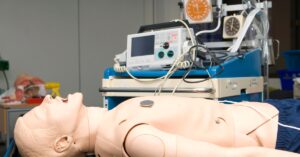If there is no help around when witnessing a drowning, how do you ensure you can help if you become their only hope for survival? You read a guide on the basic steps of resuscitating a drowning victim. Below, we explain how to ensure you’re ready to rescue the victim.
Assess the Situation
Ensure the environment is safe for you and the victim. Check for strong currents or hazardous objects that could prevent you from reaching the victim. Immediately call emergency services for additional help.
Remove the Victim from Water
Do not just grab the victim. Ensure they are safely secure by using the proper lifting technique and supporting the back and neck to avoid potential spinal injuries. Once you are both out of the water, move a safe distance away.
Check for Breathing
You must do CPR immediately if the victim is not breathing! Conversely, continuously monitor and support the victim if they are breathing but not responding. Establish care until professional medical help arrives.
When checking for breathing, observe chest movements and listen for breathing sounds. If you can feel air movement, this indicates the victim is breathing.
Administer CPR
Knowing how to perform CPR correctly can significantly impact the victim’s chances of survival. Applying the proper techniques during those critical moments helps the blood flow to the brain and other organs. Ensure you maintain a steady compression rhythm, as it helps blood flow. Also, provide rescue breaths to ensure oxygen is reaching the lungs.
Use an AED
You would use an AED to restore a normal heart rhythm, but only if necessary. You can sometimes find this device in public places, and bystanders can use it to provide immediate assistance before emergency medical services arrive.
If you find yourself using an AED, first turn it on and follow the device prompts that guide you through using it step-by-step. Ensure you examine how to prep the pads and where to place them so you deliver each shock effectively.
Monitor and Maintain
Continuously monitor the victim until professional help arrives. Monitoring and maintaining their condition, including checking their breathing and pulse, to determine whether they are responsive. Help calm them if they are responsive. Speak in a soothing voice, encourage slow breathing, advise them to limit their movements, and maintain eye contact.
Stay Trained and Ready To Save Lives at CPR123
Preparing for an emergency is dire, and its importance increases when you’re often in the water. Go beyond the basic steps to resuscitating a drowning victim by taking an ACLS training online with skills testing through CPR123. Equip yourself with the knowledge and confidence to save lives.







